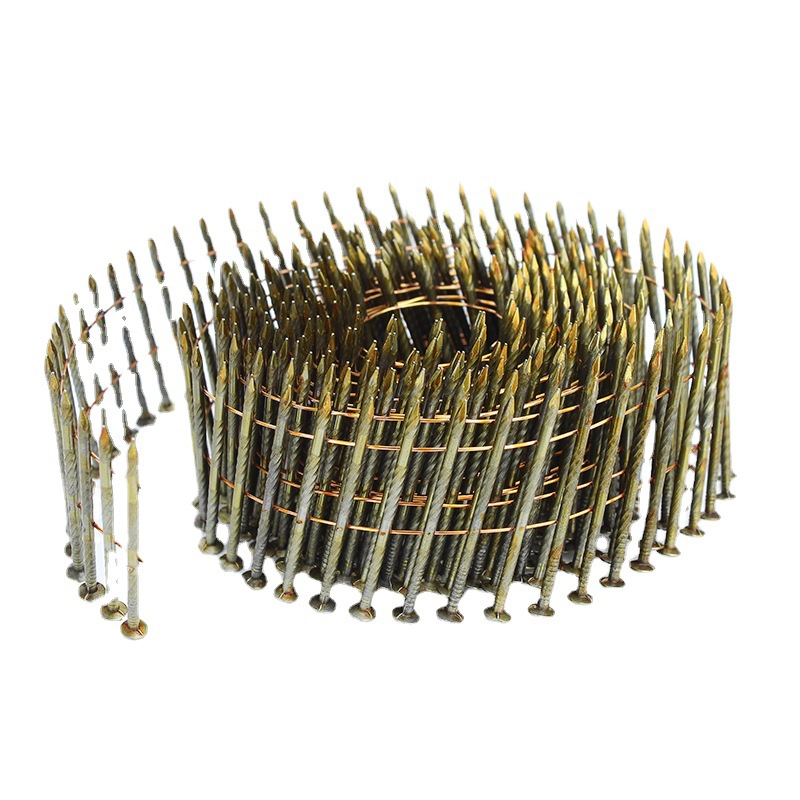Coil nails are a type of nail commonly used in construction and woodworking projects. They get their name from the way they are arranged in a coil or roll, which makes them compatible with a type of nail gun known as a coil nailer or coil framing nailer.

Design and Structure
Key design features of coil nails include:
- Coiled Configuration: Unlike individual nails, coil nails are connected in a long flexible strip wound into a coil. This allows a large number of nails to be loaded into the nail gun at once, increasing productivity.
- Full Round Head: Most coil nails have a full round head, which provides a solid holding power.
- Shank: The shank of a coil nail can be smooth, ringed, or screw-like (spiraled). Ringed and spiraled shanks provide a better grip and holding power than smooth ones.
- Point: These nails typically have a sharp point to help them penetrate the material easily.
Material
Coil nails are typically made of steel and often are galvanized or coated to resist rust and corrosion. Some types are also made from stainless steel or aluminum.
Uses and Applications
- Framing and Sheathing: One of the main uses of coil nails is in framing and sheathing applications in construction, where a lot of nails need to be driven quickly.
- Roofing: Coil roofing nails are widely used to attach asphalt, fiberglass shingles, or other roofing materials.
- Siding: They are used in siding applications, where they can be used to fasten vinyl or wood siding.
- Pallet Making and Crating: Coil nails are commonly used in pallet making and crating because of the speed of assembly.
- Decking and Fencing: They can be used in the construction of decks and fences.
- Upholstery and Furniture Assembly: Some smaller, lighter duty coil nails and nailers are used in upholstery and assembling furniture.
In all of these applications, the key advantage of using coil nails is the increased efficiency they offer. Because each coil can contain several times more nails than a traditional strip used in other nail guns, the user can drive more nails before needing to reload, increasing productivity. However, the tools used to drive these nails can be heavier and bulkier than other types of nail guns.